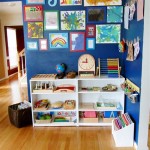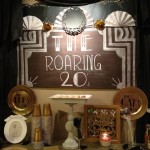Decorating Ideas For Living Rooms With Wall Mounted TVs
The living room, often the heart of the home, serves as a central gathering space for relaxation, entertainment, and social interaction. In contemporary living, the television frequently occupies a prominent position within this space. Wall-mounting a TV can offer several advantages, including space savings, improved viewing angles, and a cleaner, more modern aesthetic. However, integrating a wall-mounted TV seamlessly into the living room's design requires careful consideration and strategic planning.
This article provides a comprehensive exploration of decorating ideas for living rooms featuring wall-mounted TVs. It will delve into various stylistic approaches, practical considerations, and design techniques to help homeowners achieve a visually appealing and functionally optimized living space. The aim is to guide the reader through the process of integrating the television not merely as a utilitarian object, but as a cohesive element of the overall design scheme.
Optimizing Viewing Height and Distance
One of the foundational elements of designing a living room with a wall-mounted TV is determining the ideal viewing height and distance. Improper placement can lead to neck strain, eye fatigue, and a compromised viewing experience. The center of the TV screen should ideally be at eye level when seated. This may require adjusting the mounting height depending on the height of the seating furniture and the average viewing position.
Calculating the appropriate viewing distance is equally crucial. A general rule of thumb is to multiply the screen size (measured diagonally) by 1.5 to 2.5 to determine the optimal viewing distance. For example, a 55-inch TV would ideally be viewed from a distance of approximately 82.5 to 137.5 inches (roughly 7 to 11.5 feet). These measurements serve as guidelines, and individual preferences may vary. Experimentation and observation are recommended to fine-tune the placement for maximum comfort and visual clarity. Furthermore, the angle of the TV relative to seating influences the viewing experience. Tilting mounts, which adjust the vertical angle of the television, can be beneficial in minimizing glare and optimizing the viewing angle from different positions in the room.
Beyond the immediate viewing experience, consider the impact of sunlight and ambient light on the screen. Positioning the TV opposite a large window can lead to excessive glare, making it difficult to see the picture. Utilizing blackout curtains, blinds, or other window treatments can mitigate this issue. Alternatively, consider strategically placing the TV on a wall that is less susceptible to direct sunlight. The integration of a TV needs to consider the environmental factors that effect its viewing potential.
Camouflaging and Integrating the TV
While wall-mounting a TV offers a sleek and minimalist look, the black rectangular form can sometimes disrupt the overall aesthetic. There are several techniques to camouflage or integrate the TV into the surrounding décor, transforming it from a technological object into a harmonious element of the design.
One popular approach is to create a gallery wall around the TV. By surrounding the television with framed artwork, photographs, or decorative objects, the eye is drawn to the collective arrangement rather than solely focusing on the TV. The key is to maintain a cohesive color palette and design style to ensure the gallery wall complements the rest of the living room. Employing a variety of shapes, sizes, and textures can add visual interest and depth to the arrangement. Careful consideration should be given to the spacing between the objects and the TV to balance the composition and prevent a cluttered appearance.
Another option is to conceal the TV behind sliding panels or doors. Custom-built cabinetry or repurposed furniture can be designed to hide the TV when it is not in use. This approach allows for a seamless and uncluttered look, particularly in minimalist or contemporary living rooms. The cabinetry can be designed to match the existing furniture or to serve as a statement piece, adding both functionality and visual appeal to the space. The sliding panels or doors can feature decorative elements such as textured wood, mirrored surfaces, or artwork to further enhance the aesthetic integration.
Dark paint colors can also make the TV visually recede into the wall. Painting the wall behind the TV a dark shade, such as charcoal gray, navy blue, or deep brown, can minimize the contrast between the screen and the surrounding surface. This technique is particularly effective in rooms with dim lighting or where the TV is primarily used at night. The dark wall can also serve as a dramatic backdrop for lighter-colored furniture and accessories, creating a sense of depth and contrast within the space.
Furthermore, consider the use of decorative shelves surrounding the TV. Shelves can house books, plants, and decorative objects, effectively blurring the lines between the TV and the surrounding décor. The shelves can be arranged symmetrically or asymmetrically, depending on the desired aesthetic. Incorporating elements of nature, such as plants and natural materials, can soften the harsh lines of the TV and create a more inviting and organic atmosphere in the living room.
Managing Cables and Wiring
One of the biggest challenges associated with wall-mounted TVs is managing the cables and wiring. Exposed cables can detract from the clean and minimalist look that wall-mounting aims to achieve. Effective cable management is therefore essential for maintaining a visually appealing and organized living room.
The most common approach is to conceal the cables within the wall. This involves running the cables through the wall cavity using a cable management kit. These kits typically include in-wall rated cables, wall plates, and installation tools. It is crucial to ensure that all cables used within the wall are rated for in-wall use, as standard cables may pose a fire hazard. The installation process may require drilling holes in the wall and running the cables through these holes. If unfamiliar with electrical work, it is advisable to hire a professional to ensure the installation is done safely and correctly. A professional can ensure wiring standards are met and there is no hazard.
Alternatively, cable concealer products can be used to hide the cables without requiring in-wall wiring. These products consist of paintable plastic conduits that attach to the wall surface and conceal the cables. Cable concealers are relatively easy to install and can be a more cost-effective option than in-wall wiring. They come in various sizes and shapes to accommodate different cable configurations. The concealers can be painted to match the wall color, making them virtually invisible.
Power outlets should be strategically placed behind the TV to minimize the visibility of power cords. If an outlet is not already located behind the TV, consider hiring an electrician to install one. This will eliminate the need for unsightly extension cords running down the wall. Furthermore, surge protectors should be used to protect the TV and other electronic devices from power surges. The surge protector can be concealed behind the TV or within a nearby cabinet.
Wireless HDMI transmitters can also reduce the need for extensive cabling. These devices transmit the audio and video signal wirelessly from the source device (such as a Blu-ray player or cable box) to the TV. While wireless HDMI transmitters can be more expensive than traditional cables, they offer a clean and clutter-free solution for connecting devices to the TV. They are also useful if the desired display location and the location of devices do not allow for ease of cabling. The technology also eliminates trip hazards and can create a clean look that many homeowners desire.
When planning cable management, consider future needs. Allow for additional cable capacity to accommodate new devices or technologies. Labeling the cables can also make it easier to identify and manage them in the future. Using cable ties or Velcro wraps to bundle the cables together can further organize the wiring and prevent tangling. Managing the cables will create a safer aesthetic for the space and increase the longevity of the devices connected to the display.
Incorporating Ambient Lighting
Lighting plays a vital role in creating the desired atmosphere in a living room. When integrating a wall-mounted TV, it is essential to consider the impact of lighting on the viewing experience and the overall aesthetic of the space. Proper ambient lighting can enhance the visual appeal of the TV while minimizing glare and eye strain.
Avoid placing lamps or light fixtures directly in front of the TV, as this can create distracting reflections on the screen. Instead, position light sources to the sides or behind the TV to provide indirect illumination. This can be achieved using table lamps, floor lamps, or sconces. The light sources can be positioned to avoid glare and improve the TV’s viewing potential. The use of dimmer switches can provide greater control over the intensity of the lighting, allowing adjustments to suit different viewing conditions.
Backlighting the TV can create a soft and subtle glow that enhances the viewing experience. This can be achieved using LED strip lights mounted to the back of the TV. Backlighting can reduce eye strain by creating a more balanced contrast between the bright screen and the darker surroundings. The color and intensity of the backlighting can be adjusted to suit personal preferences. Backlighting adds a modern look to a wall-mounted display, regardless of what is playing on the screen.
Recessed lighting can provide general ambient lighting for the living room without creating glare on the TV screen. Recessed lights can be strategically placed throughout the room to provide even illumination. Dimmable recessed lights can be adjusted to create different moods and atmospheres. They can also be paired with accent lighting to call attention to design features within the room.
Consider using smart lighting systems that can be controlled remotely or automatically. These systems allow for adjusting the brightness, color temperature, and even the color of the lights. Smart lighting can be integrated with a home automation system to create customized lighting scenes for different activities, such as watching TV, reading, or entertaining guests. Smart lighting also can sync with events on the TV, creating an immersive viewing experience.
Natural light should also be taken into consideration. As mentioned earlier, excessive sunlight can create glare on the TV screen. However, natural light can also enhance the ambiance of the living room and create a more welcoming atmosphere. Utilize window treatments, such as blinds, curtains, or shades, to control the amount of natural light entering the room. The light can enhance the viewing potential of the screen. Layering window treatments can provide greater control over the light levels, allowing adjustment throughout the day.
Selecting Furniture and Accessories
The furniture and accessories in a living room should complement the wall-mounted TV and enhance the overall design aesthetic. The placement, style, and color of the furniture should be carefully considered to create a cohesive and visually appealing space.
Choose furniture that is appropriately scaled to the size of the living room. Overly large furniture can overwhelm a small room, while undersized furniture can look insignificant in a large room. The seating arrangement should be comfortable and conducive to viewing the TV. Consider a sectional sofa, a loveseat, or individual armchairs, depending on the size of the room and the number of occupants. The furniture can be positioned to facilitate easy viewing. The addition of ottomans or coffee tables can also enhance the comfort and functionality of the seating area. The furniture should offer a viewing experience that is appealing.
Incorporate decorative elements to soften the technological look of the TV. Throw pillows, blankets, and rugs can add warmth, texture, and color to the living room. Choose accessories that complement the overall design style of the room. Artwork, sculptures, and decorative objects can add personality and visual interest. The objects can pull the room together, creating a cohesive look. Consider a variety of textures and materials to create a layered and inviting space.
A media console or cabinet can provide storage for electronic devices, DVDs, and other media accessories. Choose a media console that is appropriately sized and styled to complement the TV and the rest of the furniture. The media console can also serve as a focal point in the room. It should also meet storage needs. A floating media console can create a more modern and minimalist look. The storage can be an important aspect of incorporating the TV within the room.
Plants can add a touch of nature to the living room and soften the technological feel of the TV. Choose plants that are appropriate for the light levels in the room. Consider using a variety of sizes and shapes to create visual interest. Plants can also improve the air quality in the room. Plants also can serve as visual barriers that create a calming effect. The addition of a plant can tie the room together and give it a homey feel.

18 Wall Mount Tv Design Ideas For Living Room Modern

Living Room Refresh With Sanus Within The Grove

Cozy Living Room With Wall Mounted Tv

Top 10 Wall Mounted Tv Cabinet Design For A Stylish Home Beautiful Homes

25 Tv Wall Mount Ideas For Your Viewing Pleasure Sebring Design Build Modern Living Room

Space Saving Wall Mount Tv Cabinet Designs Designcafe

Ideas Solutions For The Wall Behind Tv Jenna Burger Design Llc Interior Architectural Consulting

Mounted Tv Gallery Wall Decor Home Living Room Farm House Family Decorating
:max_bytes(150000):strip_icc()/DesignedbyVelindaHellenforEHD_PhotobySaraLigorria-Tramp_9-6a8aedcc017b4fe8a0779d25c8fc5712.jpeg?strip=all)
41 Ideas For Decorating Around A Tv That Will Help It Blend In

200 Modern Living Room Tv Cabinet Design 2025 Wall Unit Home Interior Decorating Ideas







